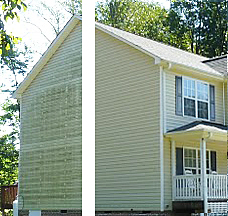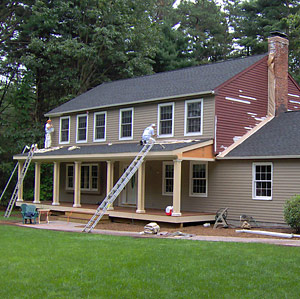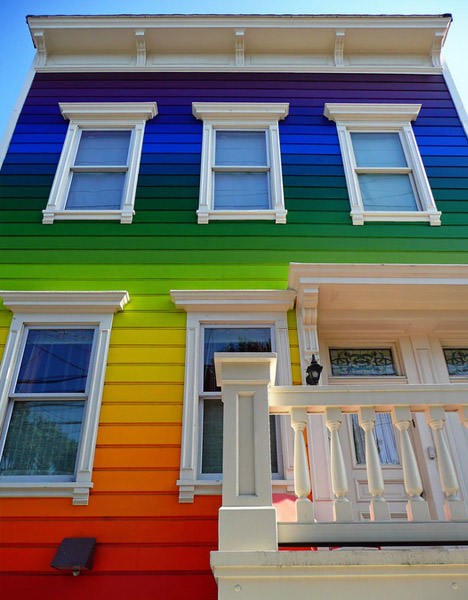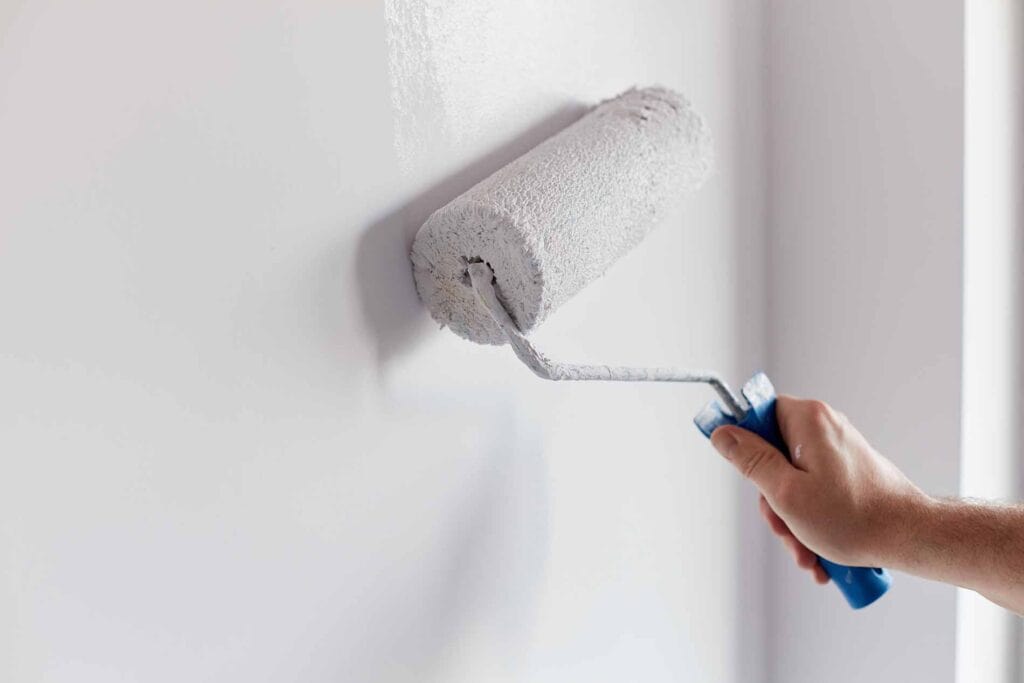
Do you know what the most important step is when painting the exterior of your home? It’s actually not the painting itself. Instead, it’s actually the preparation of the surface you are painting. Proper preparation (or lack of it) is what primarily determines the outcome. Keep in mind that your home’s exterior paint job is about much more than aesthetics; a proper exterior paint job provides a protective barrier against damaging elements. In preparation for painting, your home’s exterior needs to be clean, dry, and sound. It may also need to be primed.
Clean
Painting over a dirty surface does not yield good or long-lasting results. Exterior painting requires a clean surface before beginning. There are several ways to accomplish this.
Power washing is one way to clean a home’s exterior. The water pressure in a power washer is typically somewhere between 2,200 and 3,500 psi, which is a far cry from the amount of water pressure in your garden hose. In fact, it’s possible to do damage when a power washer is not used properly. Some of the damage a home can sustain or some additional challenges that occur as a result of improper power washing include:

• The wood can be etched by the water jet, which compromises the wood’s integrity.
• While the water jet removes loose paint, it could also deteriorate the bond of the intact paint in the spray area.
• The walls could be saturated with moisture due to the high pressure water, which could lengthen drying time.
• Power washing cannot substitute the need for hand scraping.
If there is any mildew on your home, pressure washing is not sufficient. It’s important to get rid of the mildew using bleach or some type of mildew-cide.
Cleaning is not just about removing dirt and mildew, however. The surface must also be free of flaking, oils, loose paint, and anything else that would hinder the paint from bonding with the surface. Tools you may need include a paint scraper, sandpaper, and a stiff brush.
Trisodium phosphate (TSP) is often used both to clean the walls and to de-gloss existing paint. Use eye protection and mix TSP with water; it’s a powerful chemical. Also, work from the top of the wall down and rinse off cleaners and chemicals.
If there is any gloss to the current paint, it must be sanded or scraped; otherwise, the new paint will not be able to adhere to the surface. Paint that is flaking, loose, peeling, or bubbling should also be thoroughly scraped off. Be careful that you don’t gouge wood when using a scraper when preparing for your exterior painting job.
One of the more common causes of paint failure is painting a house before it has been allowed to sufficiently dry. Allow your house to dry for at least one day if you’re painting with latex paint. If using oil-based paint, it’s usually necessary to allow a full week of drying. And if you used a power washer on the exterior, these drying times may need to be extended.
Sound
Making sure that the paint surface is sound may involve filling holes, cracks, and gouges with exterior epoxy wood filler. Allow the filler to dry before sanding the area. Larger areas in need of repair may need to be replaced. Rotting or crumbling wood should absolutely be replaced.

Prime
Not all surfaces need to be primed, but stucco and bare wood typically should be. Whether or not priming is needed depends upon the type of product your topcoat is. This is the type of question best answered by a professional. An exterior painting job which usually calls for primer is when you are making a big change in the wall color.
Before Exterior Painting…
Before you begin painting, you’ll want to remove or cover storm doors, storm windows, window screens, light fixtures, the mailbox, and anything else that you don’t want to get paint on. If you have plants near the exterior walls, cover them carefully with appropriate material so that no harm is done. Tape or tarp items, as necessary, before painting.
Having step-by-step directions on how to prepare your home for painting is well and good, but the number one way to ensure that your home has the best possible preparation and exterior paint job is to hire a professional.
Franklin Painting LLC – Call us Toll Free at 877-646-7774
or at our main office number 860-678-7701
2 Eastview Drive, Farmington, CT 06032
Exterior House Painting in CT towns like farmington, ct 06032 – avon, ct 06001 – simsbury, ct 06070 – west simsbury, ct 06092 – canton, ct 06019 – burlington, ct 06013 – bloomfield, ct 06002 – unionville, ct 06085 – weatogue, ct 06089 – suffield, ct 06078 – windsor, ct 06095 – granby, ct 06035 – collinsville, ct 06022 – west hartford, ct 06110 – 06117 – 06119 – 06127 – 06133 – 06137 / bristol, ct 06010 – new britain, ct – 06050 – 06051 – 06052 – 06053 / newington, ct 06111 – wethersfield, ct 06109 – cromwell, ct 06416 – rocky hill, ct 06067- berlin, ct 06037 – kensington, ct 06037 – portland, ct 06480 – middletown, ct 06547 – meriden, ct 06450 – middlefield, ct 06455 – east hampton, ct 06424 – chesire, ct 06410 – southington, ct 06489 – glastonbury, ct 06033 – south glastonbury, ct 06073- south windsor, ct 06074 – elllington, ct – east windsor, ct 06088 – hebron, ct 06248 – marlborough, ct 06447 – manchester, ct 06040 – 06042 – 06045 – bolton, ct 06043 – colchester, ct 06415 – tolland, ct 06084 and more!

Frank Campanelli, the esteemed founder of Franklin Painting LLC, has been leading the company since 1986. He takes immense pride in the stellar reputation his dedicated team has built by consistently delivering top-notch service to each customer.



